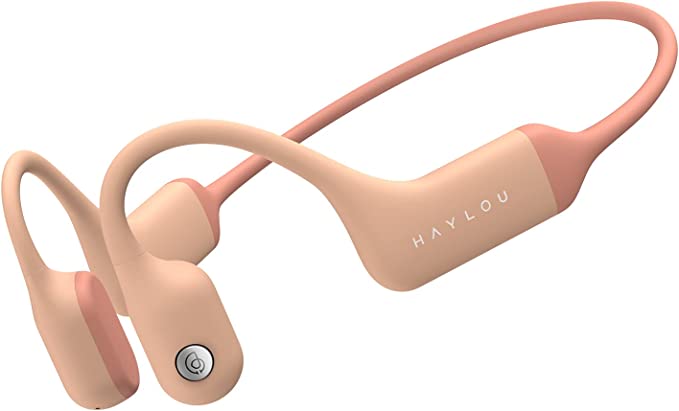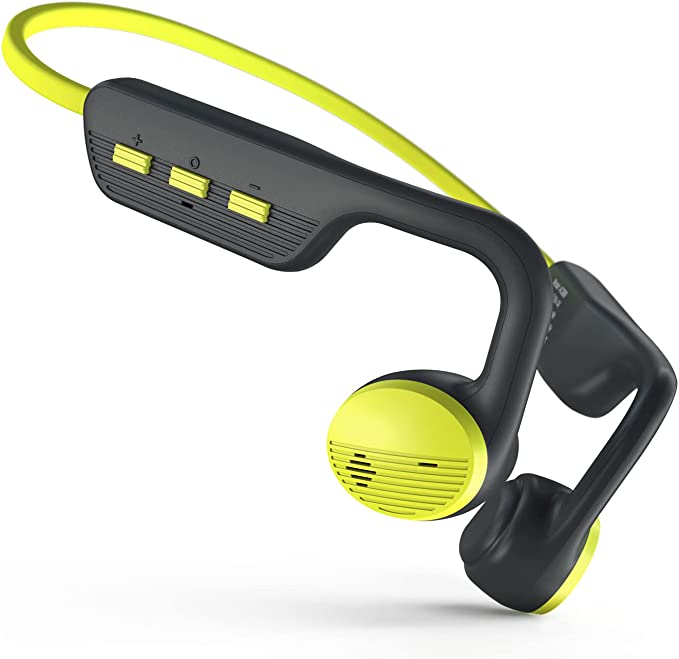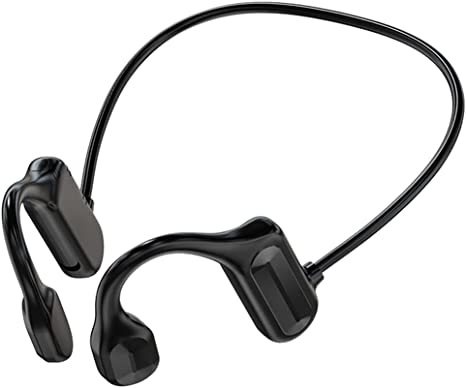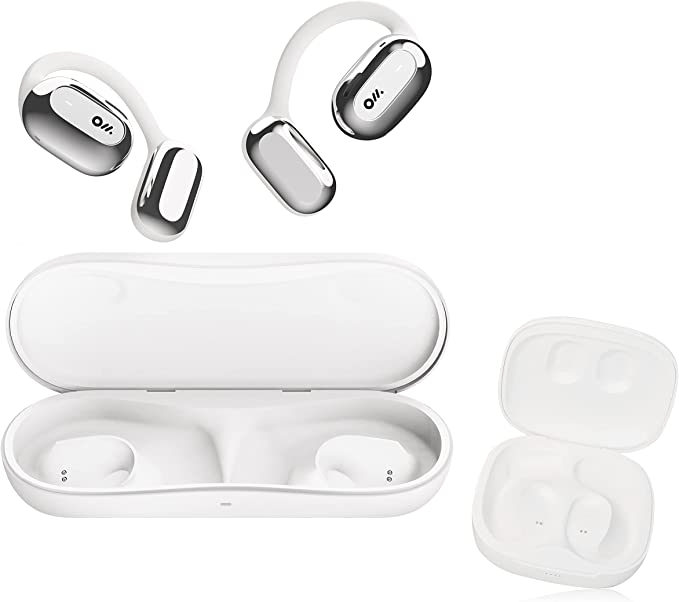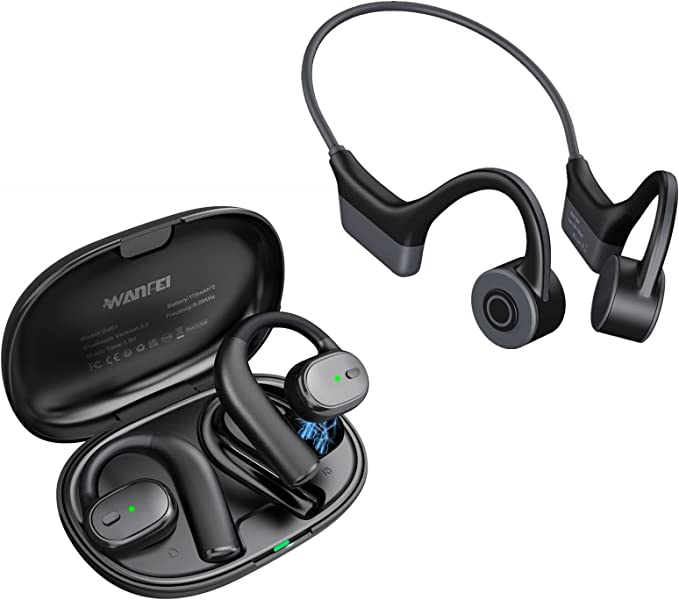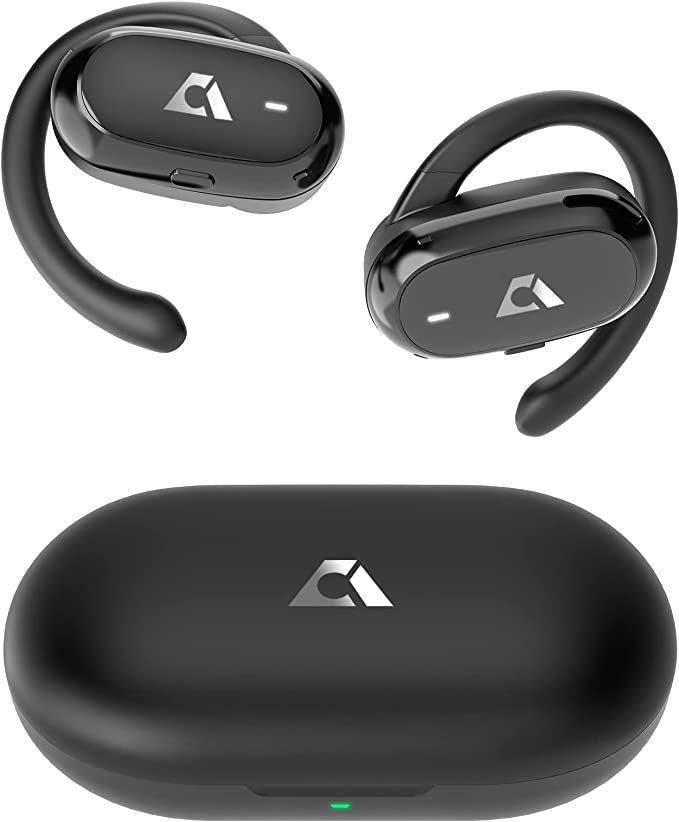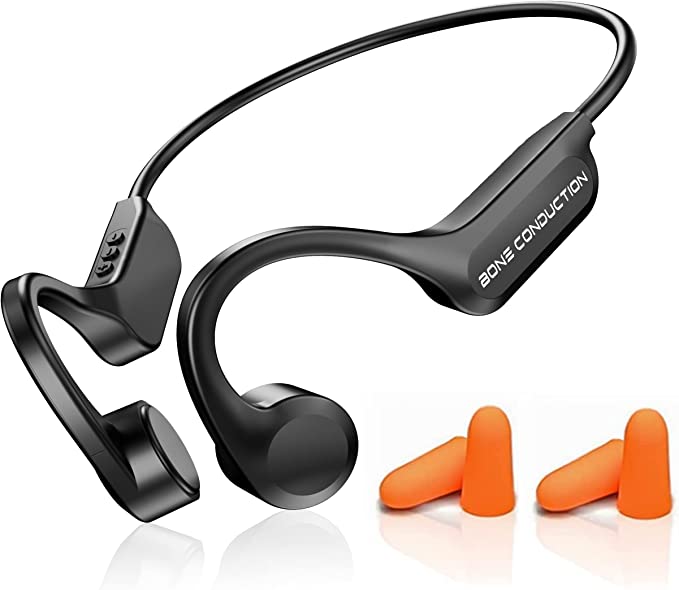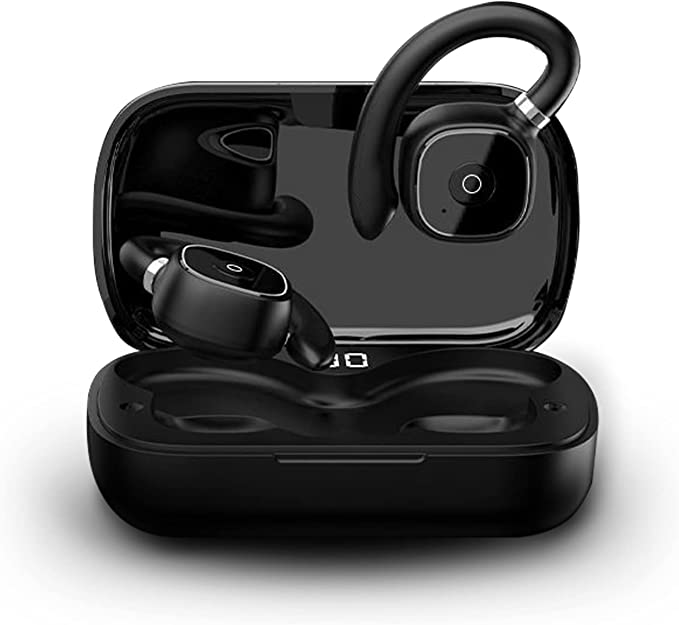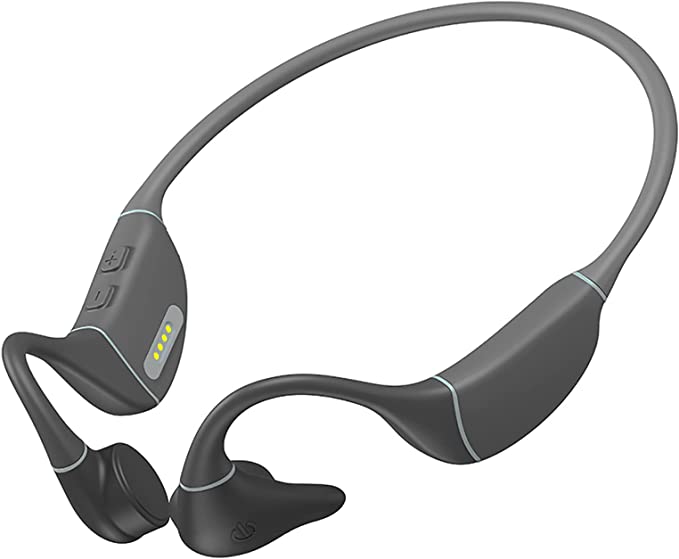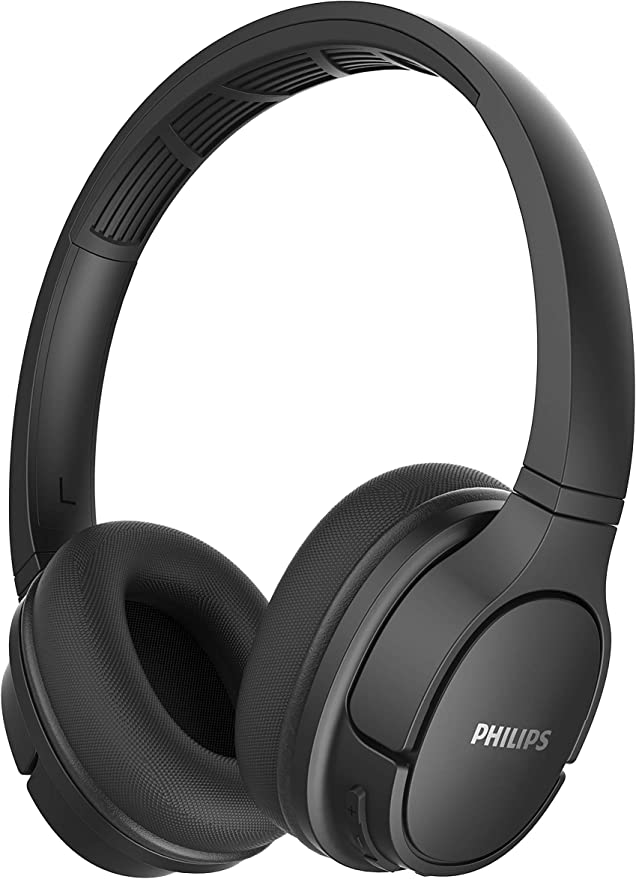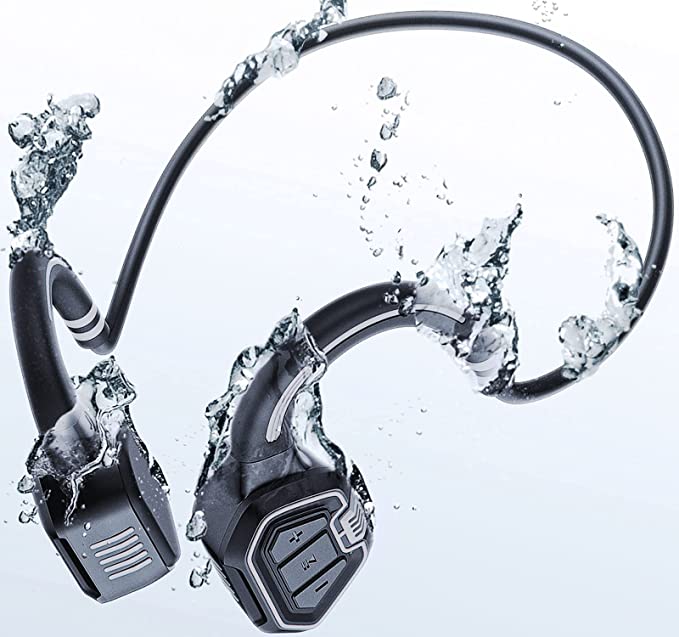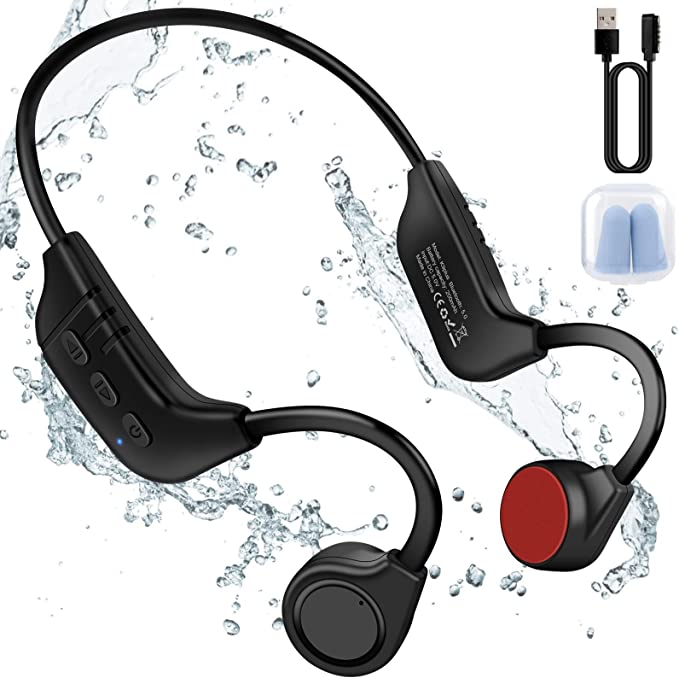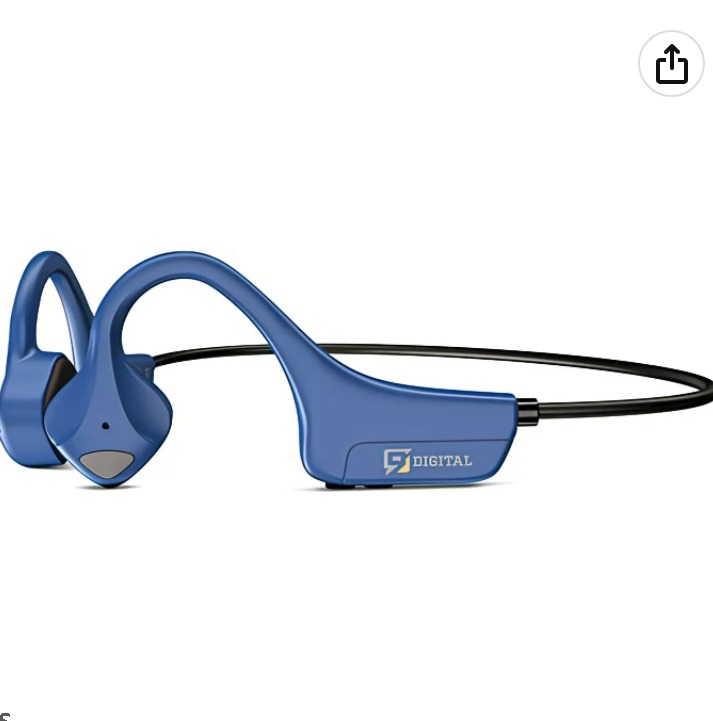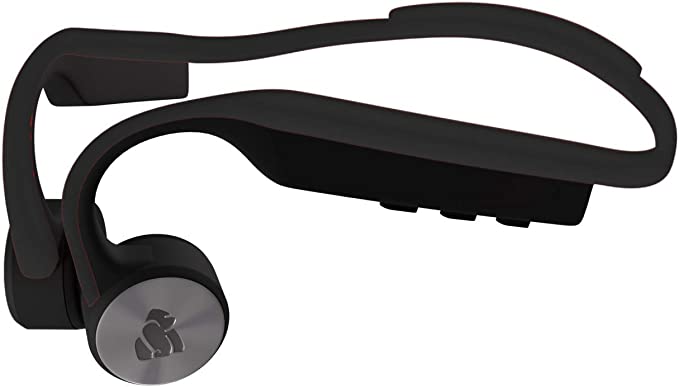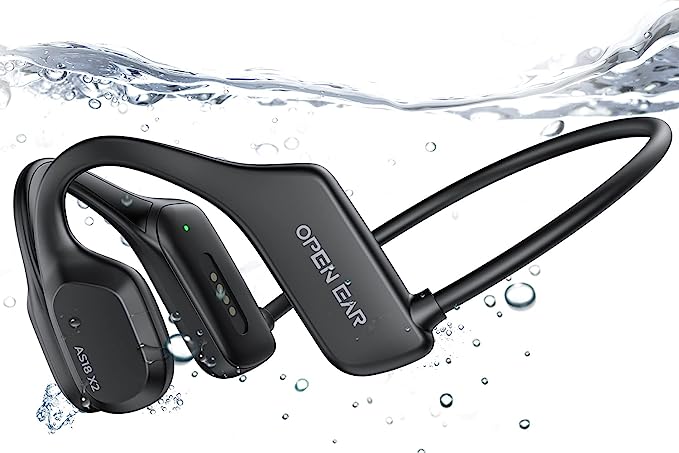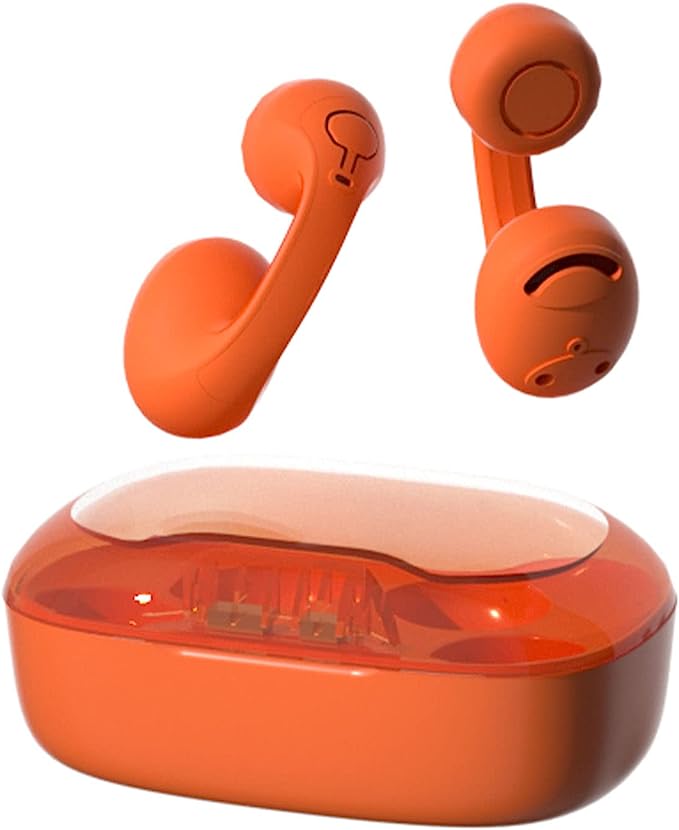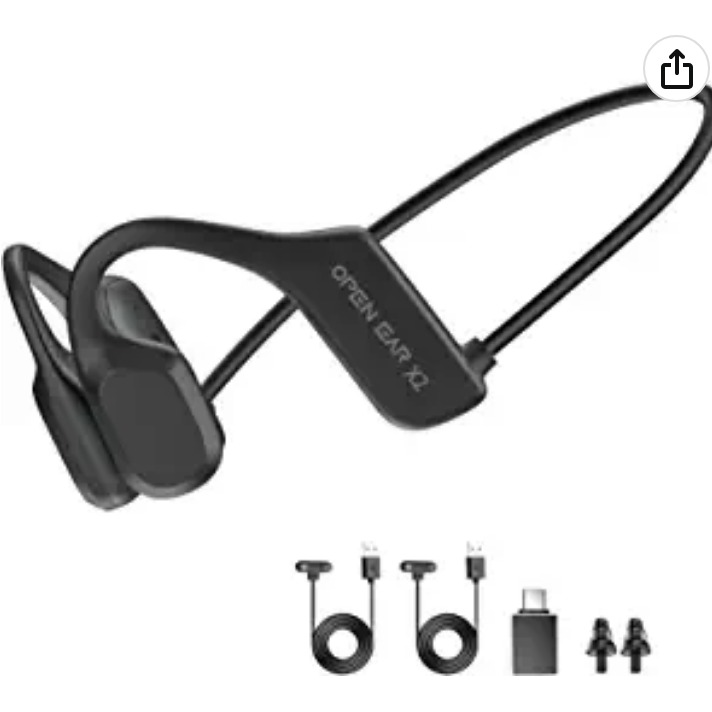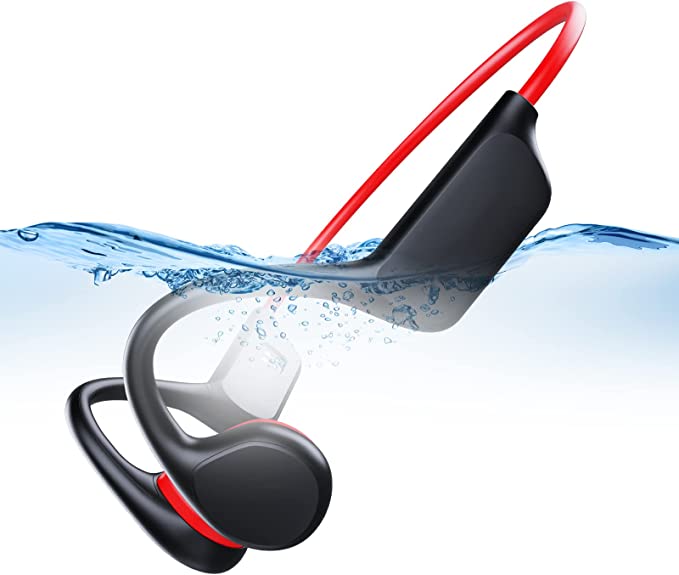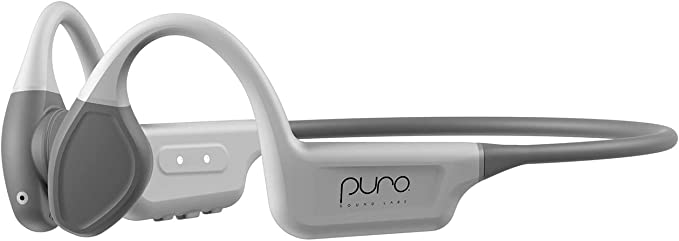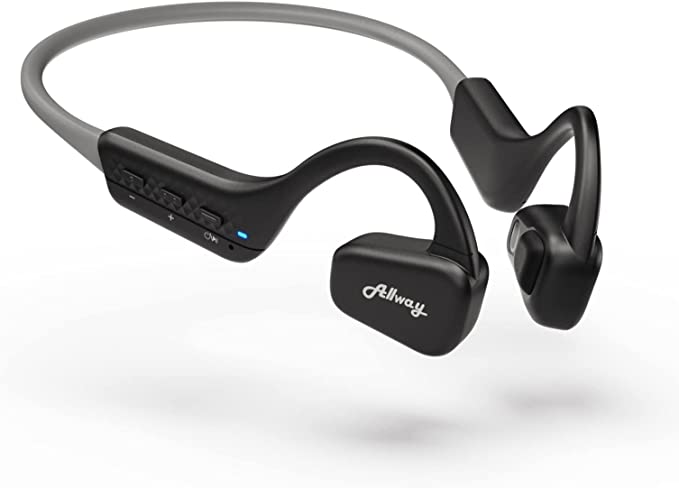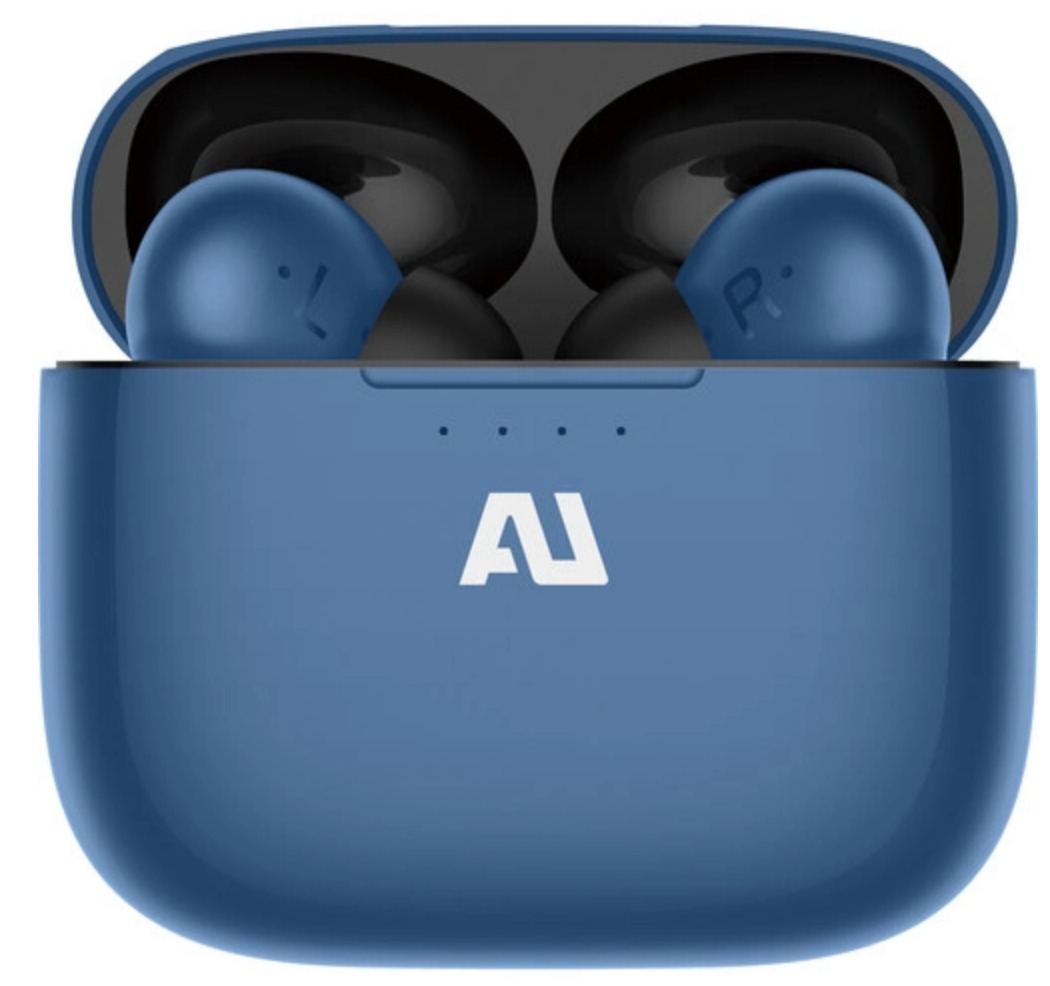Swimaudios S2 Bone Conduction Headphones: Open-Ear Audio for Active Lifestyles
Update on May 29, 2025, 6:42 p.m.
Imagine, for a moment, you’re out for your morning run, the city slowly awakening around you. Or perhaps you’re navigating a bustling cycle path, senses alive. You crave the driving beat of your favorite playlist, the immersive world of a podcast, yet a nagging unease persists. Traditional headphones, be they invasive earbuds sealing your ear canals or bulky cans cupping your ears, tend to build a sonic wall, a fortress of solitude that, while sometimes welcome, can dangerously isolate you from the symphony of a living, breathing environment – the approaching car horn, a fellow cyclist’s friendly warning, the subtle rustle in the undergrowth that hints at wildlife. This is the modern active listener’s predicament: a forced choice between personal audio immersion and vital, life-preserving situational awareness. But what if you could have both? What if there was a way to pipe your personal soundtrack directly into your consciousness while leaving your ears entirely open to the world? Welcome to the fascinating realm of bone conduction technology, and allow us to introduce a rather intriguing key to this auditory kingdom: the Swimaudios S2 Bone Conduction Headphones.

Echoes in a Skull: The Astonishing Science of Bone Conduction
The idea of hearing without directly using your ear canals might sound like science fiction, but it’s a well-established, albeit less commonly experienced, facet of our auditory capabilities. To understand bone conduction, we first need to appreciate its more familiar counterpart: air conduction.
Whispers from the Past
The concept isn’t entirely new. History whispers a tale of Ludwig van Beethoven, the prodigious composer, who, as his hearing tragically waned, reportedly discovered a novel way to perceive the music he was creating. By clenching a wooden rod between his teeth and touching the other end to his piano, he could feel the instrument’s vibrations travel through his jawbone, allowing him to “hear” his compositions. While not a direct precursor to modern headphones, this poignant anecdote beautifully illustrates the fundamental principle: vibrations, conducted through bone, can indeed translate into the perception of sound. This early, almost accidental, discovery laid a conceptual cornerstone for technologies that would, centuries later, offer new ways to experience sound, evolving from rudimentary hearing aids to the sleek, sophisticated devices we see today.
The Two Rivers of Sound
Typically, sound reaches us via air conduction. Sound waves, which are essentially vibrations traveling through the air, are funnelled by our outer ear into the ear canal. They strike the eardrum, causing it to vibrate. These vibrations are then mechanically amplified by a delicate chain of three tiny bones in the middle ear – the malleus, incus, and stapes (often charmingly referred to as the hammer, anvil, and stirrup). Finally, these amplified vibrations reach the cochlea, a spiral-shaped, fluid-filled organ in the inner ear. Here, thousands of microscopic hair cells convert these mechanical vibrations into electrical signals, which are then transmitted along the auditory nerve to the brain, where they are interpreted as the sounds we recognize. It’s an intricate and marvellous biological machine.
Bone conduction, however, offers an alternative route, a “secret passage” if you will, directly to the cochlea, effectively giving your eardrums a well-deserved vacation. Instead of sound waves traveling through the air and down your ear canal, bone conduction devices generate tiny mechanical vibrations that are transmitted through the bones of your skull – typically the cheekbones (zygomatic bones) or the temporal bones just in front of or behind the ears. These vibrations travel through the solid medium of bone, bypassing the outer and middle ear entirely, and directly stimulate the fluid within the cochlea. The cochlea, being an impartial recipient, processes these vibrations just as it would those arriving via the eardrum, triggering the same hair cells and sending the same neural signals to the brain. The brain perceives sound; the route taken is simply different.
How the “Magic” Happens
So, how do devices like the Swimaudios S2 orchestrate this bony symphony? At their heart are specialized components called transducers. These are not speakers in the traditional sense, which move air. Instead, transducers are electromechanical devices that convert electrical audio signals into precise, rapid mechanical vibrations. When you play music, the electrical output from your phone or music player is fed to these transducers. They then vibrate at frequencies corresponding to the audio signal.
In bone conduction headphones, these transducers are strategically positioned to make firm but comfortable contact with specific points on your skull, usually the cheekbones. As the transducers vibrate, they impart these vibrations directly into the bone. Think of it like striking a tuning fork and placing its base on a wooden table; the table itself begins to resonate and transmit the sound. Similarly, your skull bones become part of the sound transmission system, acting as a natural conductor, carrying these subtle vibrations directly to your inner ears. It’s a direct line, a clear channel, that fundamentally changes how, and what, you hear.

Swimaudios S2: Your Personal Soundtrack, Amplified by Science
The Swimaudios S2 headphones are a contemporary embodiment of this bone conduction principle, meticulously designed for individuals who lead active lives and refuse to compromise between their audio engagement and their connection to the world. It’s less about just listening to music, and more about choosing a particular philosophy of hearing. Let’s delve into the features that make the S2 a noteworthy contender in this space, examining them through the lens of science and user experience.
Feature Spotlight 1: The Panoramic Soundscape - Open-Ear Design
This is the defining characteristic, the very soul of bone conduction technology. The Swimaudios S2, by its nature, employs an open-ear design. The transducers rest outside your ear canal, leaving it completely unobstructed.
The Science of Awareness: Why is this so crucial? Our auditory system is a primary tool for situational awareness. It constantly scans our surroundings for important cues – the rumble of an approaching vehicle, the chime of a bicycle bell, the spoken word, even the subtle shift in wind patterns. Blocking the ear canals, as traditional headphones do, significantly diminishes this vital sensory input. This can be inconvenient in an office, but potentially dangerous outdoors. The open-ear design circumvents this entirely. You maintain a 360-degree auditory awareness, allowing your brain to process ambient sounds naturally, alongside the audio delivered via bone conduction. From a cognitive perspective, this can also reduce the mental load associated with trying to “listen through” an occluded ear for environmental cues.
Real-World Rhapsody: Imagine cycling through busy city streets. With the S2, the hum of traffic, the chatter of pedestrians, and a distant siren are all perceptible, layered naturally with your navigation prompts or favorite tunes. You’re not in a bubble; you’re part of the urban symphony, yet with your personal soundtrack. On a trail run, it’s the crunch of leaves underfoot, the chirping of birds, the whisper of the wind – sounds that enrich the experience and signal presence – that remain accessible. The Swimaudios S2 aims to make you a safer, more integrated participant in your environment.
S2’s Role: The physical design of the S2, a lightweight band that typically wraps around the back of the head with transducers resting on the cheekbones, is fundamental to achieving this open-ear experience. It’s engineered to stay put during activity without intruding into or covering the ear.
Feature Spotlight 2: The Ghost in Your Gear - Featherlight at 23g
One of the first things you might notice about the Swimaudios S2, or rather, fail to notice after a while, is its weight. The product listing highlights a bodyweight of just 23 grams (approximately 0.81 ounces). This is exceptionally light.
The Alchemist’s Touch: Achieving such a low weight without compromising structural integrity or performance involves careful material science. The S2 employs a titanium bone frame. Titanium is a remarkable metal, celebrated in aerospace, medical implants, and high-performance sporting goods for its exceptional strength-to-weight ratio. It’s nearly as strong as steel but significantly lighter, and it boasts excellent corrosion resistance (important when dealing with sweat) and flexibility. This allows the frame to be both durable and subtly compliant for a good fit. This is often paired with flexible silicone for the parts that contact your skin, chosen for its softness, hypoallergenic properties, and ability to grip gently.
Ergonomic Poetry: The pursuit of comfort in wearable technology is a fine art. For headphones worn during extended periods, especially during vigorous physical activity, minimizing weight and pressure points is paramount. A heavy or poorly balanced headset can lead to neck strain, headaches, or simply become an annoying distraction. The 23g weight of the S2, distributed by its wrap-around design, aims to create a “barely there” sensation.
S2’s Achievement: This focus on lightweight construction means the S2 is designed to be a near-weightless companion, whether you’re on a multi-hour marathon training run, a long cycling tour, or even just wearing them for extended periods at a standing desk. The goal is for the technology to fade into the background, letting you focus on your activity and your audio.
Feature Spotlight 3: Dancing in the Rain (or Sweat!) - IPX6 Resilience
Active lifestyles inevitably involve perspiration, and sometimes, Mother Nature throws in an unexpected rain shower. The Swimaudios S2 is specified with an IPX6 rating for sweat and water resistance.
Decoding the Code: “IP” stands for Ingress Protection, a standard (IEC 60529) that classifies the degrees of protection provided by enclosures of electrical equipment against the intrusion of solid objects (like dust) and liquids. The first digit after IP relates to solid particle protection, and the second to liquid ingress protection. An ‘X’ in place of the first digit (as in IPX6) means the enclosure has not been formally rated for solid particle protection, though a design مقاوم للماء (water-resistant) often inherently provides some dust protection. The ‘6’ in IPX6 is the crucial part here: it signifies that the enclosure is protected against powerful water jets. Specifically, water projected in powerful jets (12.5 mm nozzle) against the enclosure from any direction shall have no harmful effects.
The Athlete’s Ordeal: For an athlete, this is a critical feature. Sweat is corrosive, and intense workouts can produce a lot of it. Getting caught in the rain is also a common scenario for outdoor enthusiasts. Without adequate protection, moisture can easily seep into sensitive electronic components, leading to malfunction or complete failure.
S2’s Armor: The IPX6 rating suggests the Swimaudios S2 is engineered to withstand these rigors. You should be able to sweat profusely or run through a moderate downpour without undue worry about damaging your headphones. It’s a shield against the elements encountered during most sporting activities. However, it’s important to note the distinction: IPX6 is about resistance to water jets, not submersion. As the product information rightly clarifies, they are “Not suitable for swimming,” which would typically require an IPX7 (immersion up to 1 meter) or IPX8 (continuous immersion) rating.
Feature Spotlight 4: The Unending Encore? - 6 Hours of Auditory Bliss
A wireless device is only as good as its battery life, especially when you’re away from power sources for extended periods. The Swimaudios S2 offers up to six hours of continuous use on a single charge.
The Little Engine That Could: Modern battery technology, particularly Lithium-Ion (as mentioned in the product details: “1 Lithium Ion batteries required. (included)”), has enabled significant power storage in compact forms. However, for a device as lightweight as the S2, there’s always a design tension between battery capacity (and thus size/weight) and desired runtime. Factors like the efficiency of the Bluetooth chipset, the power draw of the transducers at typical listening volumes, and standby power consumption all play a role.
A Day in Sound: Six hours is a respectable duration for many users. It can cover several gym sessions, a long run or bike ride, a full day of intermittent podcast listening during commutes and breaks, or a substantial portion of a workday if used for calls and background music. While ultra-marathoners or those on epic all-day adventures might seek longer-lasting options, six hours strikes a practical balance for a wide range of everyday active scenarios.
S2’s Stamina: Achieving this in a 23g package indicates thoughtful engineering in power management and component selection, aiming to provide a reliable audio experience without tethering you to a charger too frequently. The actual battery life will, of course, vary based on volume levels, the type of audio content, and even ambient temperature, but “up to six hours” provides a solid benchmark.
Feature Spotlight 5: The Invisible Thread - Bluetooth 5.0 Stability
Wireless connectivity is the backbone of the S2’s convenience. The product description points to Bluetooth 5.0 Connectivity.
The Evolution of Wireless: Bluetooth technology has come a long way since its inception. Bluetooth 5.0, compared to its predecessors like 4.x, offers several key theoretical advantages relevant to a device like headphones. These can include increased data transmission speeds (allowing for potentially higher quality audio codecs, though the specific codecs supported by S2 aren’t detailed), greater range (though this is highly dependent on environmental factors and the paired device), more stable connections with reduced dropouts, and improved power efficiency, which contributes to better battery life.
The Unseen Dance: In a world increasingly crowded with wireless signals (Wi-Fi, other Bluetooth devices, microwaves), maintaining a stable audio stream can be challenging. A robust Bluetooth implementation is crucial to prevent annoying skips, stutters, or disconnections, especially when your phone might be in a pocket or armband while you’re moving vigorously.
S2’s Promise: By incorporating Bluetooth 5.0, the Swimaudios S2 aims to provide that seamless, uninterrupted audio flow that users expect. Whether you’re streaming high-bitrate music or relying on clear audio for a podcast, the stability of the wireless link is fundamental to a positive listening experience.
Feature Spotlight 6: A Word on the Go - The Built-in Microphone
Beyond just listening, the Swimaudios S2 also allows for communication, thanks to its built-in microphone for hands-free phone calls.
The Challenge of Open-Air Calls: Microphone performance in open-ear headphones, especially those designed for active use, presents unique challenges. Because your ears are open, the microphone might pick up more ambient noise compared to earbuds that seal the ear canal and bring a microphone closer to the mouth, or boom mics on over-ear headsets. The quality of the microphone itself, coupled with any noise-cancellation algorithms (the presence or specifics of which are not detailed for the S2 in the provided material), will determine how clearly your voice is transmitted to the person on the other end, especially in noisy environments.
Life Doesn’t Pause: For many, the ability to take a call without stopping their activity or fumbling for their phone is a significant convenience. Whether it’s a quick check-in while out on a walk, an urgent call during a commute, or coordinating with a workout partner, a built-in mic adds a layer of practical functionality.
S2’s Utility: The inclusion of a microphone positions the S2 as more than just a passive listening device. While audiophile-grade call clarity in a windstorm might be an unrealistic expectation for many compact sports headphones, the goal here is to provide clear enough voice transmission for crucial connections and convenient hands-free operation, allowing you to stay connected without breaking your stride. The open-ear design does have one inherent advantage for calls: you can hear your own voice naturally, which often leads to speaking at a more normal volume, avoiding the “shouting effect” some experience with noise-isolating headsets.
A Moment for Honesty: Navigating User Voices & Technical Nuances
It’s important to approach any product with a balanced perspective. The provided information indicates the Swimaudios S2 has a customer rating of 3.9 out of 5 stars from 13 global ratings. This suggests a generally decent, though not universally perfect, reception from a very small initial sample of users. The snippets of reviews – “Buen producto” (Good product), “Doesn’t compare to airshhokz,” and “Lose sound and I can’t hear” – paint a mixed picture, which is common for many tech products, especially those involving subjective experiences like audio quality and comfort.
Bone conduction technology itself, while offering unique benefits, also has inherent characteristics that differ from traditional air conduction. For instance, reproducing deep, resonant bass frequencies can be more challenging for bone conduction transducers compared to high-quality in-ear or over-ear drivers that move air directly into or around the ear canal. Some users might also perceive a slight tickling sensation from the vibrations at very high volumes, though this varies greatly from person to person and with device design. Sound leakage (whereby others nearby can faintly hear your audio at higher volumes) can also be more noticeable with some bone conduction designs compared to well-sealed earbuds. These are not necessarily flaws of a specific product like the S2, but rather common attributes of the current state of consumer bone conduction technology that users should be aware of when setting expectations. The key is whether the S2 successfully delivers on its core promises of open-ear awareness, comfort, and durability for its intended active audience, within the typical performance envelope of this technology class.

Choosing Your Auditory Path: Bone Conduction in the Symphony of Choices
The world of personal audio is diverse, with different technologies excelling in different domains. Bone conduction headphones like the Swimaudios S2 don’t exist in a vacuum; they offer a distinct alternative to the more conventional in-ear and over-ear headphones. Understanding their unique place helps in making an informed choice.
A fork in the sound road:
* In-Ear Headphones (Earbuds): These are designed to fit directly into your ear canal, often creating a seal.
* Pros: Can offer excellent noise isolation, potentially deep bass response (due to the seal), highly portable.
* Cons: Block out ambient sound (reducing situational awareness), can cause ear fatigue or discomfort for some, hygiene concerns if not cleaned regularly.
* Over-Ear/On-Ear Headphones: These use cushioned earcups that either rest on your ears (on-ear) or completely enclose them (over-ear).
* Pros: Can provide a rich, immersive soundstage, often excellent bass, can offer active noise cancellation (ANC).
* Cons: Generally bulkier and less suited for vigorous activity, can get warm with prolonged use, significantly reduce situational awareness.
* Bone Conduction Headphones (Swimaudios S2 as an example):
* Pros: Excellent situational awareness (open-ear design), generally very comfortable for long wear (no ear canal pressure), good for those who dislike objects in their ears, often sweat-resistant and durable.
* Cons: Bass response may not be as powerful as traditional types, can have some sound leakage at high volumes, the sensation of vibration might be new to some users.
Not a replacement, but a revelation: It’s crucial to understand that bone conduction technology isn’t necessarily aiming to replace all other types of headphones for all situations. Instead, it offers a revelation for specific scenarios and user needs where its unique advantages shine brightest. If your absolute priority is the most profound bass for critical music listening in a quiet room, or complete silence from the outside world via active noise cancellation on a noisy flight, then traditional high-fidelity over-ear headphones might still be your go-to.
Who are these for? The ideal user for bone conduction headphones like the Swimaudios S2 is often someone who: * Prioritizes situational awareness: Runners, cyclists, hikers, construction workers, parents supervising children, or anyone who needs to hear their surroundings for safety or convenience. * Engages in active pursuits: The secure fit, lightweight design, and sweat resistance are tailored for movement. * Experiences discomfort with traditional earbuds: Those who find earbuds irritating, painful, or prone to falling out. * May have certain types of conductive hearing loss: While not a medical device, bone conduction can bypass issues in the outer or middle ear for some individuals (consultation with an audiologist is always recommended for hearing loss). * Values a blend of personal audio and environmental connection: Someone who wants their soundtrack without feeling entirely cut off from the world.
The Swimaudios S2, with its feature set, appears squarely aimed at that active, awareness-valuing individual.
The Resonating Future: Where Bone Conduction Might Take Us
Bone conduction is not a static technology; it’s an evolving field with exciting potential. While current consumer devices like the Swimaudios S2 offer a compelling glimpse into its capabilities, research and development continue to push the boundaries.
Beyond the current limitations: Engineers are constantly working to address some of the inherent challenges. This includes: * Enhanced Audio Fidelity: Improving the richness and depth of sound, particularly in the lower frequency (bass) ranges, without significantly increasing transducer size or power consumption. New transducer designs and materials are key areas of exploration. * Reduced Sound Leakage: Developing more focused vibration transmission to minimize the amount of sound that “escapes” and becomes audible to those nearby, especially at higher volumes. * Further Miniaturization and Comfort: Making devices even lighter, more discreet, and ergonomically refined for an even more “invisible” wearing experience. * Improved Vibration Management: Minimizing any potentially distracting tactile vibration sensation, particularly at higher output levels, through advanced damping techniques or more efficient energy transfer.
Whispers of integration: The future of bone conduction likely lies not just in standalone headphones, but in its integration with other technologies: * Augmented Reality (AR): Bone-conducted audio could provide discreet, private audio cues and information overlays in AR glasses, without blocking real-world sounds. Imagine navigation prompts or notifications heard only by you. * Smart Helmets: For cycling, skiing, or industrial use, integrating bone conduction audio directly into helmets offers safety and convenience. * Communication Systems: For first responders or military personnel, bone conduction can provide clear communication even in high-noise environments where ear protection is also necessary. * Medical and Assistive Devices: Expanding its role in advanced hearing solutions and devices for individuals with specific auditory needs. * Health Monitoring: Some research explores using bone conduction pathways for certain types of biometric sensing, although this is more nascent.
The ultimate quest for many in wearable audio is a truly seamless, almost imperceptible interface – audio that is present when you want it and gone when you don’t, without any physical or sensory encumbrance. Bone conduction, with its unique approach to sound delivery, is a significant contender in this ongoing exploration.

Listen Differently, Live Fully
The Swimaudios S2 Bone Conduction Headphones, and the technology they represent, are more than just another way to listen to music. They are an invitation to a new philosophy of auditory engagement – one where your personal soundscape can coexist harmoniously with the rich, dynamic, and often critical symphony of the world around you.
By leveraging the remarkable ability of our own bodies to transmit sound through bone, these devices offer a unique blend of immersion and awareness, comfort and resilience. They remind us that technology, at its best, doesn’t seek to isolate us from our environment, but rather to provide tools that allow us to interact with it more safely, more effectively, and perhaps even more joyfully.
Whether you’re an athlete pushing your limits, a commuter navigating a busy city, or simply someone who values being present and connected, exploring the world of bone conduction might just change the way you think about listening. It’s an encouragement to not just hear your music, but to hear more – more of life, more of your surroundings, more of the subtle cues that make every experience unique. The journey into open-ear audio is an invitation to listen differently, and in doing so, perhaps, to live a little more fully.
